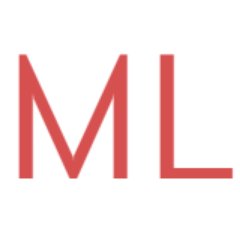
Alex Barreto
@shakamunyiOpenStacker, Dockerite, Kubernaut. Data Analytics Infrastructure hands-on SME. Raspberry Pi enthusiast. 100% Cybernetic. Run on second-hand positronics.
Similar User

@renato_umeton

@GilPress

@randal_olson

@bamitav

@lucasoft_co_uk

@bigdataconf

@bobehayes

@MuleSoft

@TechNativeTV

@7wData

@albertspijkers

@SmartDataCo

@NDSMLSummit

@v_vashishta

@Pardoe_AI
One on one meetings (1:1s) with employees are an important part of managing a team but can be rife with confusion during these uncommon times. Here are some tips to make them better. (1/6)
Make the 1:1s a formal, ongoing part of your dialogue with teams. Have a set date and time. In this economic environment, a “hey, let’s chat when you have a minutes” message on Slack may scare someone who’s worried about being laid off. (2/6)
Focus on the team member and the work that they are doing. This 1:1 is about giving them a voice and finding out how to help them succeed. Ask questions and listen to the team member, don’t filibuster. (3/6)
Celebrate wins in 1:1s, tell the team member what they are doing right. If there’s issues around performance, focus on correcting it in the future, not dwelling on what happened in the past. (4/6)
1:1s should be inspirational, but they should also be results-oriented. Talk about what you want to see in the coming weeks before the next scheduled 1:1. Set up other ways to check-in and give updates as well. (5/6)
At jammHQ we use asynchronous video for project check-ins and updates. It’s a great way to keep connected and on the same page between 1:1s (6/6)
RT datarade: I spend $5 a month on fb ads. I’ve announced that I’m pulling my ads from Facebook.
One of the great benefits of a remote, distributed team is that it allows an organization to be flatter than traditional companies. You’re more likely to hire team members who can act independently and have a history as individual contributors. (1/5)
Even in a very flat organization, there are sometimes larger projects that need a collective effort and an organizational hierarchy. If you are looking to strengthen the team and their output I recommend a model of encouraging alternate leadership. (2/5)
Rotating leadership around the organization and letting different members of your team manage important projects helps to build ownership and commitment to the company and the mission. This helps to overcome some of the issues of remote teams. (3/5)
As a leader of a remote team, this model of alternate leadership can only be successful if the proper lines of communication are in place. In many cases, 1:1 conversations are very important to the proper completion of tasks. (4/5)
One of the potential downfalls of remote work is that you can fall into the trap of working from dawn to midnight and still not feel that you’ve accomplished anything. This is not a function of being busy, but more a function of how you handle incoming work and tasks. (1/6)
One of the most important things to break out of this cycle is to have a morning routine. Don’t wake up and then start emailing and working on tasks. Check your email first thing and only reply to the urgent ones, don’t spend more than 10 minutes on this. (2/6)
Choose a routine that will help you prepare for the day; it might be a morning run, a quick jaunt for coffee or maybe breakfast with the family. The idea is to do something good for your body and mind and not go straight into the workday without a chance to clear your head.(3/6)
During the day, try to build quiet time blocks into your calendar. You can use these time blocks to do some coding, catch up on emails, read some industry news, or maybe go out for a walk. The point is to try and take back some of your time so the day doesn’t run together. (4/6)
Lastly, just like you created a morning habit, create an end-of-day habit. Maybe it’s making dinner, exercising, reading a novel or playing video games, etc. It’s important to close the workday much as you started it. Otherwise, you’ll never know when the day should end. (5/6)
If you are a newly remote worker, what has been the hardest part of the transition?
RT juandebravo: If you’re lucky enough to #WFH today, what role do you think remote work will have in our post-COVID-19 world? At jammhq…
Looking for a great list of tools to help accelerate #remotework? The folks at Fortune made a great list (and included Jamm) fortune.com/2020/03/19/fre…
#WFH has become the new normal. But how is it going? And what are employee expectations once #COVID19 distancing restrictions are lifted? At Jamm we’ve pulled together a brief 2-minute survey to find out. We’d love your thoughts! jammhq.typeform.com/to/Vf0QB2 #survey
United States Trends
- 1. $EMT 5.623 posts
- 2. #EarthMeta 1.784 posts
- 3. $NUT 2.071 posts
- 4. #ChristmasCrunchSweepstakes N/A
- 5. Cyber Monday 88 B posts
- 6. #GivingTuesday 7.247 posts
- 7. Art Cashin 1.011 posts
- 8. SLIMETOOZ 1.986 posts
- 9. #SarahBoone N/A
- 10. #GalaxyFold6 N/A
- 11. Isaac Guerendo N/A
- 12. Durbin 5.534 posts
- 13. Circus 22,4 B posts
- 14. Arbuckle 2.145 posts
- 15. Act 10 7.188 posts
- 16. Martin Short N/A
- 17. Hozier 1.803 posts
- 18. Daniel Penny 34,6 B posts
- 19. Hunter Biden 1,79 Mn posts
- 20. Tacky 2.301 posts
Who to follow
-
 Renato Umeton, Ph.D.
Renato Umeton, Ph.D.
@renato_umeton -
 Gil Press
Gil Press
@GilPress -
 Randy Olson
Randy Olson
@randal_olson -
 Amitav Bhattacharjee
Amitav Bhattacharjee
@bamitav -
 Lucasoft co.uk
Lucasoft co.uk
@lucasoft_co_uk -
 Global Big Data Conference
Global Big Data Conference
@bigdataconf -
 Bob E. Hayes
Bob E. Hayes
@bobehayes -
 MuleSoft
MuleSoft
@MuleSoft -
 TechNativeTV
TechNativeTV
@TechNativeTV -
 7wdata
7wdata
@7wData -
 drs Albert Spijkers
drs Albert Spijkers
@albertspijkers -
 SmartData Collective
SmartData Collective
@SmartDataCo -
 NDSML Summit
NDSML Summit
@NDSMLSummit -
 Vin Vashishta
Vin Vashishta
@v_vashishta -
 Prof Andy Pardoe
Prof Andy Pardoe
@Pardoe_AI
Something went wrong.
Something went wrong.












































































































